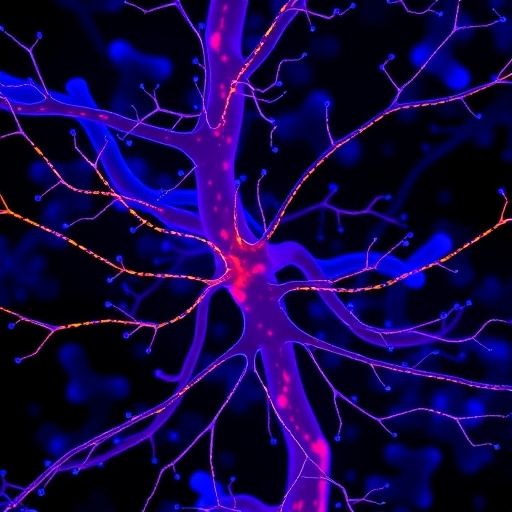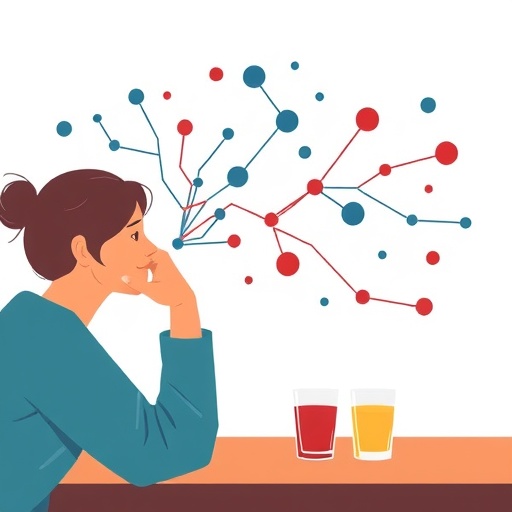
In a groundbreaking study published in Nature Communications, a team of researchers has unveiled complex cellular and molecular landscapes associated with human polyneuropathies, revealing new insights into the pathophysiology of these debilitating nerve disorders. By leveraging advanced multi-omic technologies, the investigators, led by Heming, Börsch, and Wolbert, have uncovered a previously unrecognized role for perineurial hyperplasia and a distinctive subset of lipid-associated macrophages within affected peripheral nerves. This pioneering work promises to reshape our understanding of nerve injury and repair mechanisms, with far-reaching implications for therapeutic development.
Polyneuropathies, which encompass a broad spectrum of disorders characterized by progressive damage to peripheral nerves, affect millions worldwide, often resulting in chronic pain, sensory deficits, and motor dysfunction. Despite their prevalence, the precise cellular drivers and molecular pathways governing nerve degeneration and regeneration remain incompletely understood. Traditional histopathological methods provide limited resolution to dissect the nuanced changes occurring within the nerve microenvironment during disease progression. To address these challenges, the authors employed a multi-omic approach, integrating transcriptomics, proteomics, and spatial mapping technologies to achieve an unprecedented level of detail.
Central to their findings is the identification of perineurial hyperplasia, a pathological thickening of the perineurium—the protective sheath surrounding nerve fascicles—that manifests consistently across diverse polyneuropathy etiologies. This structural alteration implicates the perineurium not merely as a passive barrier but as an active participant in the disease process. The researchers demonstrated that perineurial cells undergo significant proliferative and phenotypic changes, a phenomenon that likely impacts nerve permeability and the microenvironmental cues that govern nerve cell survival and function.
.adsslot_plCFZjBKAX{width:728px !important;height:90px !important;}
@media(max-width:1199px){ .adsslot_plCFZjBKAX{width:468px !important;height:60px !important;}
}
@media(max-width:767px){ .adsslot_plCFZjBKAX{width:320px !important;height:50px !important;}
}
ADVERTISEMENT
Moreover, the study highlights a striking accumulation of a specialized macrophage population within affected nerves, distinguished by their robust association with lipid metabolism pathways. These lipid-associated nerve macrophages exhibit gene expression profiles enriched for lipid uptake, storage, and degradation functions, suggesting a critical role in managing lipid dysregulation during nerve injury. The presence of these macrophages may reflect an adaptive immune response aimed at clearing myelin debris or damaged cellular components, but their persistent activation might also exacerbate inflammation and impede repair.
By integrating single-cell RNA sequencing with spatial transcriptomics, the researchers mapped these lipid-associated macrophages to precise anatomical niches within the nerve, often in close proximity to regions of perineurial thickening. This spatial co-localization hints at intricate crosstalk between perineurial cells and macrophages, potentially orchestrating a microenvironment that either facilitates or obstructs nerve regeneration. The interplay of these cellular actors underscores the complexity of immune and structural responses in peripheral nerve pathology.
Importantly, the lipid metabolic signature of these macrophages unveils new potential therapeutic targets. Modulating macrophage lipid handling capacity could mitigate chronic inflammation and promote a regenerative milieu conducive to nerve repair. The study suggests that targeting lipid metabolism pathways within macrophages may serve as an innovative strategy to ameliorate nerve damage in polyneuropathies, an avenue that has been relatively unexplored in clinical research.
The multi-omic framework employed also uncovered alterations in extracellular matrix components and signaling pathways that reinforce the perineurial barrier during disease progression. Enhanced deposition of specific matrix proteins likely contributes to the observed hyperplasia and may influence cellular trafficking and nerve conduction. Understanding these matrix dynamics provides fresh perspectives on how the nerve microenvironment becomes dysregulated, potentially offering biomarkers for disease severity and prognosis.
Another captivating revelation pertains to the heterogeneity of macrophage populations within the peripheral nerve. The lipid-associated macrophages represent only one component of a diverse immune milieu, with subsets exhibiting pro-inflammatory or reparative phenotypes. The study elaborates on how these divergent macrophage states evolve during the course of neuropathy, influenced by metabolic cues and local cellular interactions. Dissecting this heterogeneity is crucial to designing targeted immunomodulatory therapies that can precisely recalibrate the immune landscape.
The research also explores the implications of these findings for diabetic and inflammatory neuropathies, where lipid accumulation and immune dysregulation are hallmark features. By demonstrating conserved patterns of perineurial hyperplasia and macrophage lipid association across different disease contexts, the study posits a unifying pathogenic mechanism underlying polyneuropathies with varied etiologies. This convergence opens the door to broader application of therapeutic strategies developed from these insights.
Technically, the integration of spatially resolved multi-omic data constitutes a major advance in the field. While previous approaches offered snapshots of gene expression or protein abundance, the combined methodology here enables correlation of molecular signatures with microanatomical structures at near cellular resolution. This capability is instrumental in teasing apart the complex biophysical and biochemical interactions within diseased nerves, setting a new standard for neuropathological investigation.
Beyond its direct clinical relevance, this study also enriches fundamental neuroscience by redefining the roles of perineurial cells and resident immune populations. The traditionally understudied perineurium emerges as a dynamic tissue integral to maintaining nerve homeostasis and responding to injury. Likewise, nerve macrophages are revealed as multifunctional custodians, balancing clearance, inflammation, and repair through finely tuned metabolic programs. These conceptual shifts will likely catalyze new lines of research into nerve biology.
The authors anticipate that their multi-omic atlas will serve as an invaluable resource for the scientific community, enabling further hypothesis generation and validation studies. The comprehensive dataset lays the groundwork for future investigations into gene regulatory networks, cell-cell communication pathways, and metabolic adaptations in neuropathic conditions. Moreover, such detailed molecular characterization is essential for the development of precision medicine approaches tailored to individual patient profiles.
Looking ahead, therapeutic interventions aimed at normalizing perineurial architecture or modulating macrophage lipid handling hold promise but will require careful preclinical and clinical evaluation. The challenge lies in selectively targeting pathological processes without compromising nerve integrity or immune competence. However, the specificity of the cellular and molecular targets identified here enhances the feasibility of designing such precision therapies.
In summary, the study by Heming and colleagues propels our understanding of human polyneuropathies into a new era, elucidating key cellular players and metabolic pathways that underpin nerve dysfunction. Their multi-omic dissection of perineurial hyperplasia and lipid-laden macrophages alters prevailing paradigms, revealing novel therapeutic targets and mechanistic insights. As the burden of peripheral nerve diseases continues to escalate globally, these findings offer a beacon of hope for improved diagnostics and treatments.
This research exemplifies the power of integrative multi-omic strategies combined with spatial mapping in unraveling complex tissue pathologies. By marrying high-throughput molecular data with precise anatomical context, the study sets a transformative precedent for approaching other chronic neurodegenerative disorders. The rapidly growing field of spatial multi-omics is poised to revolutionize biomedical research, with this work serving as a sterling example of its application.
Ultimately, the insights gleaned from this work emphasize the intricate synergy between immune cells and structural components in the peripheral nervous system, deepening our appreciation of nerve biology and disease. Continued exploration of these interactions will undoubtedly yield further breakthroughs, ushering innovative modalities to alleviate suffering and enhance quality of life for patients afflicted by polyneuropathies worldwide.
Subject of Research:
Cellular and molecular mechanisms underlying human polyneuropathies, focusing on perineurial hyperplasia and lipid-associated nerve macrophages.
Article Title:
Multi-omic identification of perineurial hyperplasia and lipid-associated nerve macrophages in human polyneuropathies.
Article References:
Heming, M., Börsch, AL., Wolbert, J. et al. Multi-omic identification of perineurial hyperplasia and lipid-associated nerve macrophages in human polyneuropathies. Nat Commun 16, 7872 (2025). https://doi.org/10.1038/s41467-025-62964-8
Image Credits: AI Generated
Tags: advanced techniques in neuropathy researchcellular mechanisms in nerve injurychronic pain and peripheral nerveslipid-associated macrophages rolemulti-omics in polyneuropathynerve macrophages in nerve disordersperineurial hyperplasia significanceproteomics in polyneuropathy studyspatial mapping technologies in medicinetherapeutic implications of nerve researchtranscriptomics in neurobiologyunderstanding nerve degeneration





